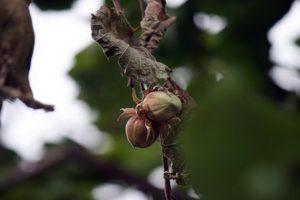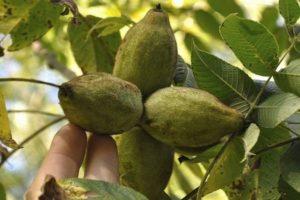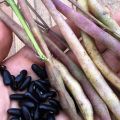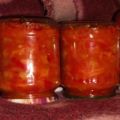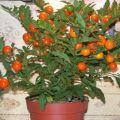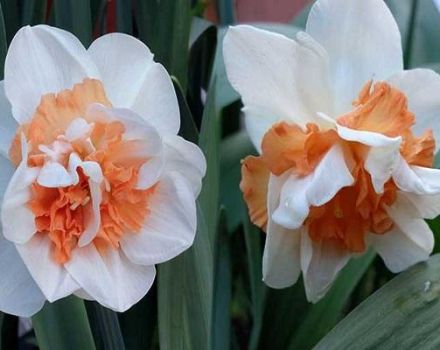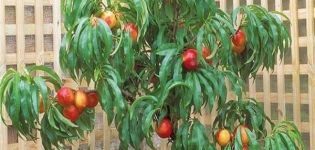Reproduction, cultivation and care of the olive at home
The olive tree is one of the longest-living plants on the planet, and its fruits have properties that are beneficial to human health. It is customary to grow olives in warm areas in open conditions. However, the cool climate, for example, in the north of Russia, the tree does not withstand well. Therefore, it is grown here indoors. Let's figure out how to grow an olive tree at home with proper care.
Description of the plant
The olive, or European olive, is found in the form of trees and shrubs. There are more than sixty plant varieties in the world.
The olive tree can live for more than half a century, and trees grow in Jerusalem two thousand years old. The plant can be kept at home for about ten years, after which it must be transplanted into an open area..
Young domestic olive trees are characterized by a light bark that darkens with age. The leaves of the trees keep even in winter and are renewed every two years. The flowers are small, white. Fruits grow up to three centimeters long and weigh about five grams, and can be green or dark purple in color.
The olive fruit contains many substances that are beneficial to the human body. Eating fruits is useful for the prevention of diseases of the cardiovascular system, gastrointestinal tract and oncology.
How to get a Potted Olive
A homemade olive can be planted by rooting a stalk. You can also buy a ready-made tree, but this will cost from 20 thousand rubles for a two-year olive. You can grow a plant from a seed, but such a tree will begin to bear fruit only after 12 years, whereas a tree grown from a cuttings will take three years to do this.
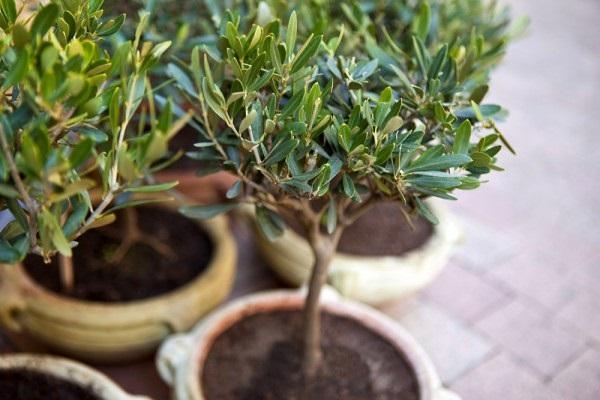
Species and varieties suitable for home cultivation
Homemade olive is often used for decoration purposes. For indoor conditions, miniature varieties are suitable, up to two meters in height. Home olive can be made in the bonsai style, with a curved trunk and oppressed roots. This variety is combined with any interior of the room thanks to the silvery shade of the crown.
Planting a tree in a pot
Fresh olive seeds sold in specialized stores are suitable for planting. Pickled olive seeds will not work; nothing will sprout from them. Before planting, the bones should be placed in an alkali solution for two-thirds of a day to get rid of the hard shell. After processing, the seeds should be dried.
As a soil for planting, a substrate is suitable, half consisting of river land, and the other half - sod and garden soil equally. Add a small amount of peat and lime.

Choose a pot for an olive with a depth and width of 60 centimeters. There should be holes at the bottom of the container to drain excess moisture. Place some charcoal on the bottom of the pot.
The seeds should be planted in the soil to a depth of three centimeters. In order for the plant to take root, at first, keep the room temperature from 20 degrees and the air humidity at a high level.
Tips for caring for the olive tree at home
In order for an olive to grow healthy and bear fruit, you need to follow some rules. Growing olives requires a certain temperature, light conditions and regular watering.
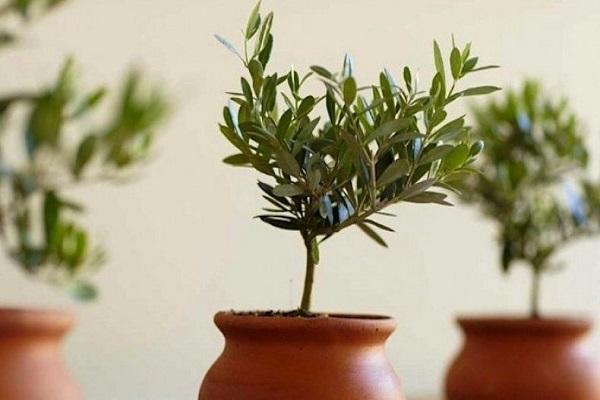
Location and lighting
Maintain bright lighting to help the tree grow. In the summer season, it is preferable to take the olive out into the garden or on the balcony to give access to the sun's rays. In the shade, the growth of the tree will slow down and it will not bloom. In the winter season, provide the olive tree with as much sunlight as possible indoors.
Temperature
Homemade olive is able to withstand heat, and in winter the plant needs to be provided with a temperature of +5 degrees. At cold temperatures, tree growth will slow down, and in severe frost, it may die altogether. During the growing season, maintain the temperature regime at +20 degrees so as not to ruin the harvest.
Watering
The home olive is able to cope with short dry periods, but the plant does not tolerate prolonged drought. Young trees need regular watering. Adult plants need to be watered less often, the soil should dry out between waterings, excess moisture from the pallets should be removed. In the cold period, watering the plant should be rare.

Air humidity
In terms of air humidity, the olives do not need special conditions. Natural humidity in summer - outdoors and in winter - indoors is sufficient for the plant. In the heat, the tree should be sprayed with water at room temperature two to three times a day.
Top dressing
In the spring, once every couple of weeks, feed the plant with organic preparations that combine nitrogen. In the summer, the olive needs complex mineral fertilizers. In addition, spraying with succinic acid supplements the feeding and helps the development of the plant.
Pruning
Olive needs regular pruning for sanitary purposes. At the beginning of spring, a tree growing in open conditions is cut off areas damaged by insects. The olive tree is pruned in spring, also for decorative purposes. A neat ball crown can be successfully shaped using a hand pruner. When pruning, remove weak branches and leave strong ones.
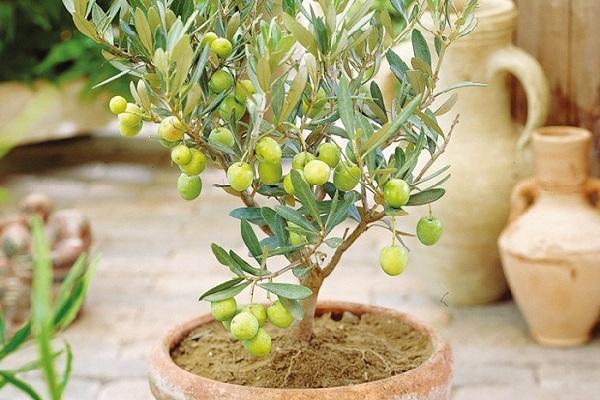
When carrying out the procedure, keep in mind that olive fruits grow only on last year's shoots, so trim them carefully so as not to destroy the crop.
Transfer
Transplant the plant every few years. Olives at a young age tolerate soil changes, but in an adult tree, roots may be damaged during transplantation. Provide a suitable transplant site. Rotten soil can lead to plant wilting. When transplanting, it is useful to add charcoal to the soil.
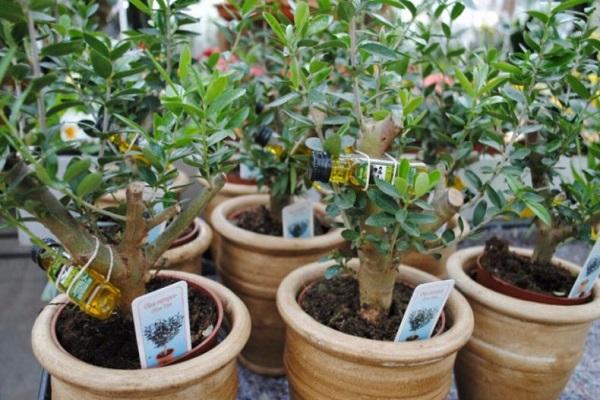
Diseases and pests
Olive has good immunity against pests. However, in the absence of proper care, excess moisture, improper light and temperature conditions, the plant is susceptible to attack by harmful bacteria and fungi.
The greatest danger is tuberculosis. As a result of infection, the plant becomes covered with large blisters.In the vast majority of cases, an infected tree cannot be completely cured, but small foci of infection can be cut off and treated with copper sulfate to minimize damage.
Excess moisture can cause the olive to rot or rust. Biological fungicides, for example, Fundazol, help well against rot. To combat parasitic insects, like the olive moth, Actellik, Karbofos and other insecticides are widely used.

Black worms deliver great harm to olive. Their appearance indicates that the plant is affected by harmful insects. Worms lay a huge number of eggs in the bark. Worms infect both diseased and completely healthy trees.
To avoid infections, it is enough to properly care for the olive. Fortunately, the olive is an unpretentious tree, so it will be enough to provide it with the minimum required amount of moisture, as well as the correct temperature and light conditions. The tree should be protected from pests using natural biological preparations, since chemistry negatively affects the yield, killing the beneficial properties of the fruit.
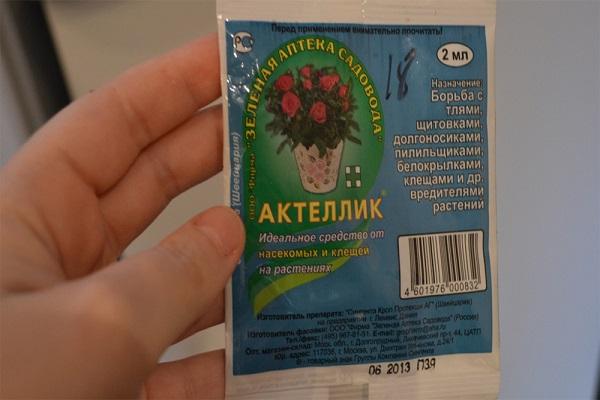
Olive propagation methods
The olive tree at home can be grown using seeds or cuttings. Each of these methods has advantages and disadvantages..
Seeds
Growing an olive from seeds is a rather lengthy and labor-intensive method. It can take as long as 15 years before the first fruits after planting. For planting, fresh seeds with a shell dissolved in an alkali are used. Germination occurs in three months. For the first five years, the seedling needs to be transplanted annually, after which the transplant is carried out once every couple of years.
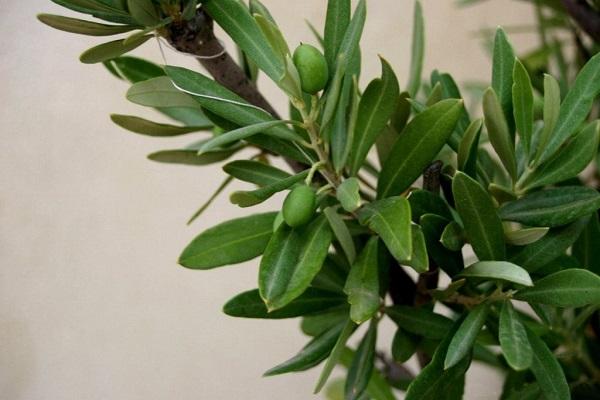
Cuttings
Vegetative propagation is the fastest way a plant can be grown. With this method, the seedling inherits the characteristics of the variety and blooms much faster.
First, you need to prepare annual cuttings by processing the cuts for rooting. The cutting must be planted in wet sand in a transparent container. It is necessary to observe a temperature regime of about 20 degrees Celsius. It is necessary to moisturize the plant in a timely manner. The stalk should be transplanted to a permanent place in late summer, early autumn.
